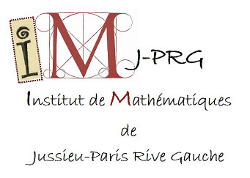Partially hyperbolic diffeomorphisms possess stable and unstable foliations, which are contracted in forward and backward time, respectively. Except in the special case of Anosov diffeomorphisms, the sum of the stable and unstable dimensions is strictly less than the dimension of the ambient manifold. The resulting lack of transversality between this pair of foliations presents a central challenge in studying the dynamics of partially hyperbolic maps; in particular, there is no hope to expect a given stable leaf to intersect a given unstable leaf, even under iteration, and such transverse intersections are key in establishing chaotic properties in hyperbolic dynamics. In the 90s, Bonatti and Diaz developed a mechanism to work around this lack of transversality, called stable/unstable blenders, which they used to construct open sets of non-Anosov transitive diffeomorphisms.
In this talk I will discuss work with Artur Avila and Sylvain Crovisier that highlights the use of blenders to establish properties other than transitivity. The applications I hope to discuss are behind the following results:
1) Stable ergodicity is $C^1$-dense among partially hyperbolic diffeomorphisms (2017). Here "superblenders" are used to rescue a Hopf argument (an application of blenders that originated with Rodriguez Hertz, Rodriguez Hertz, Tahzibi and Ures).
3) For a $C^1$-open and $C^r$-dense set of partially hyperbolic diffeomorphism with $1$-dimensional expanding center, the (strong) unstable foliation is minimal (in preparation). Here global geometric blenders are used to construct perturbations leading to minimality of these foliations.
My goal is to develop some intuition for what blenders are and what they can do. | 
